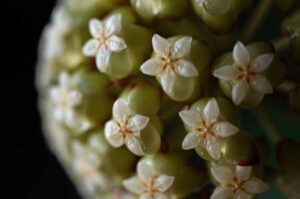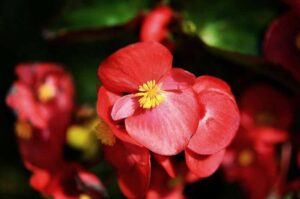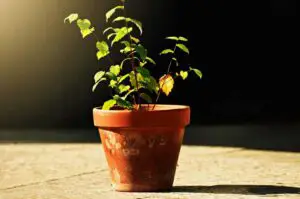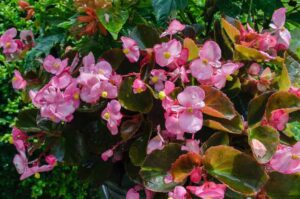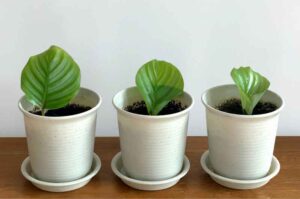Growing Philodendrons on Moss pole- Everything you need to know
Philodendrons are something that we all love. So, who do we grow these Philodendrons with? Is a moss pole the right solution to grow them?
We all know that Philodendrons are beautiful and easy-to-grow plants. Vining makes them more attractive and mesmerizing. They are naturally grown in the rainforest of Brazil. In nature, these beautiful epiphytes may grow flat to the ground, or the vines can grow upward along the tree’s trunk.
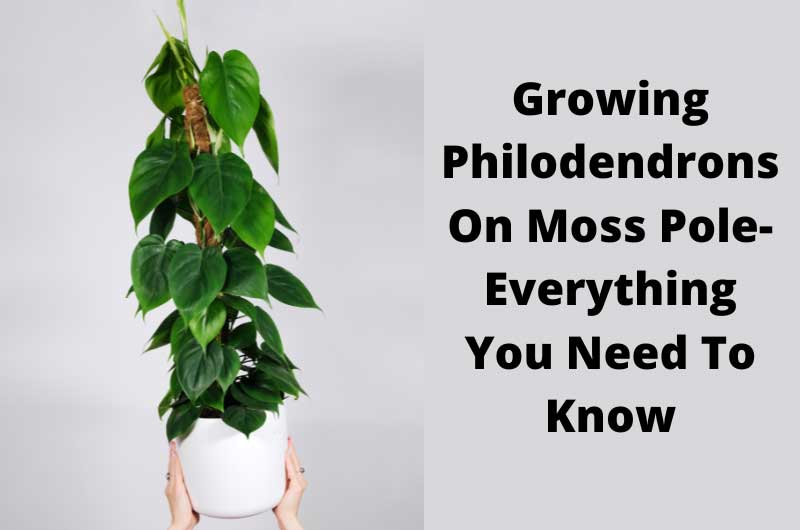
But do you know, when Philodendrons grow upward, they tend to grow upward, more extensive, shinier, and with more variegated leaves?
Now there might be a lot of questions like Can Philodendrons hang instead of making them climb? Do all Philodendrons climb? What are the climatic conditions for a Philodendron? Is a wooden plank good for a Philodendron? What are the benefits of Philodendrons and moss?
All these questions will be discussed in this article.
Does Philodendron need a moss pole?
Well, the answer is a Yes!! If you wish that your Philodendrons need to grow upward, then a moss pole is an excellent option. A small trellis or climbing ladder can also be used to grow Philodendron. Apart from this Philodendron’s aerial roots grow into the soft moss material and stake themselves in place.
You need to put the moss pole in the center of the pot and allow Philodendrons to grow in the potting soil. Then carefully pull the vines upward along the pole. Use a rope to tie the plant. If you mist the pole, the aerial roots will grow into the pole, and a tie will no longer be necessary for older growth.
Benefits of using a moss pole for philodendron:
There are several benefits of Philodendrons when they are grown with a moss pole. The moss pole supports plants’ growth, training their growth habit, and vines with adventitious roots provide extra micronutrients to Philodendrons. They also include aroids.
Aroids are the contact between aerial roots and moss poles that can trigger the development of larger and more mature leaves.
Climatic conditions for Philodendron:
Every plant or epiphyte needs specific conditions for growth and development. There are some factors that significantly affect the growth and development of a plant. Philodendrons are tropical foliage plants from the family of Araceae and are the easiest to grow of all houseplants. They come in a variety of leaf sizes, shapes, and coloring. The climatic conditions required for the growth and development of Philodendrons are:
I) Temperature:
We all know that Philodendrons are tropical plants that cannot tolerate cold climatic conditions. A long, extended cold may lead to plants freezing and ultimately to death. The ideal temperature of Philodendrons indoors is from 55 and 90°F, and at the same time, the night temperature is from 64 to 75°F.
iI) Light:
Philodendrons may be tropical but don’t like the full sun because they grow in dense forest conditions. For an outdoor Philodendron, you should prefer a place that receives partial shade to protect it from the sun during the hottest months of the year. Indoor Philodendrons prefer bright and indirect light.
iII) Moisture:
Philodendrons are native to rainforests, and they require frequent watering. Water is enough only to make the soil moist but not soggy. Always remember that you shouldn’t leave the plants in standing water.
You should keep the atmosphere humid by misting or spraying foliage several times a day in summer. However, these beautiful plants need significantly less humidity during the winter months, but shouldn’t become too dry. Overwatering may lead to yellowing of lower leaves and growing tips dying off.
iv) Soil Type:
They need a potting soil with a good combination of 30 percent soil, 20 percent peat, 40 Percent orchid bark with charcoal, 10 percent perlite, and a thin layer of finely shredded sphagnum moss.
They also need fertilizer every four to six weeks with a dilute water-soluble fertilizer or a slow-release fertilizer. Too much fertilizer may lead to curling the leaves’ tips and turning them brown.
V) Propagation:
To propagate the indoor Philodendron, cut the stem with at least two joints in pots of sandy peat with a bottom heat of 70 to 75o F from direct sun.
Other Benefits of Growing Philodendron on moss Polls:
- Moss poles resemble the structure of moist bark and provide physical support for the plant to grow aerial roots and climb upwards.
- It also offers the growing plant sufficient space to grow in an upright, narrow form to fit better in small spaces.
- A moss pole might seem intimidating initially, but it’s fantastic and easy to grow with time.
- Also, the moss poles are a simple, versatile, and effective means to support the Philodendrons.
- They support the aerial roots of vining species which can easily attach to the fibrous material, securing the plants and encouraging their growth.
- The moss pole supplies moisture to the plants because they are always made with a water-retentive material, so watering the pole will allow it to store some moisture.
- They often help plants progress to maturity, potentially leading to taller plants, larger leaves, fenestrations, and more.
- They can make rough and unruly plants look extraordinary and aesthetic.
- By wrapping the plant around a moss pole, the leaves can be brought closer, quickly shaping the plants’ foliage as per need.
Moss poles or Wooden Planks- Which are best for philodendron:
So, what do you call the plants like Monstera, Philodendrons, Hoya’s, or Orchid? They are called epiphytes. These epiphytes naturally tend to grow along surfaces, just like trees. When they are mature enough, they climb.
Some of these plants fenestrate while others grow double in size. What will happen if these beautiful epiphytes are not given proper support? If these epiphytes are not given support, they will sprout smaller and more juvenile leaves. That’s why you need to support them.
Again, a question must be arising in your mind. What kind of support do they need?
What does the support look like- this varies from person to person. Some people believe that wooden planks are best for the people, while others believe in the supremacy of moss plants. But who is the best? Here are some of the pros and cons, which are discussed below.
I) Moss Poles:
Moss poles are made from sphagnum moss. You can buy these moss poles online or through DIY with different materials like chicken wire, heaps of moss, and zip ties. If the right amount of humidity is right, aerial roots take off with moss poles. They are perfect for raising the ambient humidity. They are easier to attach and can be made more prominent when the plant inevitably outgrows it.
However, these sphagnum dries out very fast, say about 24 hours. If your moss plant does not have enough humidity, then you won’t be able to find mature leaves. Keeping them moist isn’t ideal if you see multiple moss poles around.
The next point is these moss plants are expensive. Moss poles use a lot of sphagnum moss, and many bags of sphagnum moss! In addition, the chicken or other wire makes the price a bit high.
ii) Wooden Plank:
Well, half of the people depend on mosses while the rest of the people prefer wooden planks. Finding wooden planks from nearby hardware stores is pretty easy and convenient. If you need a fancy, stylish and cozy type of wooden plank, then you should go for Zella Trellis.
These wooden planks also act to mimic natural substances. They provide a high higher humidity rate to those aerial roots attached at no time.
However, the worst thing about these wooden planks is that they rot. Cedar wood is best; sometimes, it could be tricky to find.
Conclusion:
Most of the Philodendrons grow on regular pots, dripping over the sides. They can climb any vertical plant or tall wall, which increases the aesthetic value of your house. They are an excellent source of aesthetic purpose.

